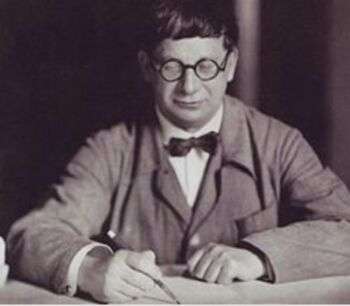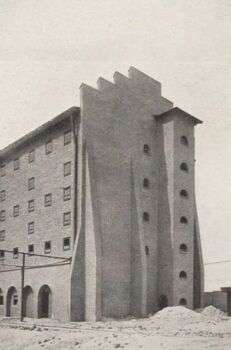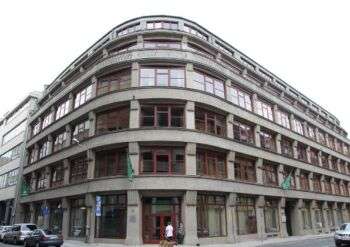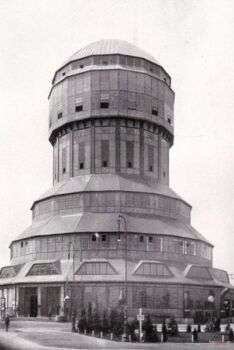German architect and set designer Hans Poelzig is the finest examples of German Architectural Expressionism.

Image source: https://commons.wikimedia.org/wiki/File:Hans_Poelzig,_1927.jpg
About His Life
Hans Poelzig was born in Berlin in 1869. He was appointed Professor of the Academy of Arts and Crafts in Breslau (now Wroclaw). He became City Architect of Dresden (1916–20) and Professor at the Technische Hochschule there. In 1918, he joined the Novembergruppe. By 1920, he moved to Berlin, and he headeda studio in the Academy of Arts there. From 1923, he taught at Berlin-Charlottenburg. Then, he died on June 14, 1936, in Berlin.

Image source: https://search.creativecommons.org/photos/d93cbe84-fe99-43e6-9aab-5e517b952683
His Major Works
- Grosses Schauspielhaus is a theatre in Berlin whose structure was originally a market built by architect Friedrich Hitzig. Additionally, it retained its external, gabled form.

Image source: https://search.creativecommons.org/photos/4a40d4de-0f99-4e60-b002-597b104cbf4e by bianca.maggio
- Chemical Factory (1912) in Lubań, German (now Poland)
- Haus des Rundfunks (1930) in Berlin, which is the oldest self-contained broadcasting house in the world.
- IG Farben Building (or the Poelzig Building, 1928-1930) in Frankfurt, whose building’s original design was the subject of a competition which was won by Poelzig.

Image source: https://search.creativecommons.org/photos/bebf7594-9a51-456f-9ec9-de80307da9ab by jarito
- Palace of the Soviets, which was a project for a administrative center and a congress hall (if built, it would have become the world’s tallest structure of its time) in Moscow.
- Office Building in Breslau

Image source: https://search.creativecommons.org/photos/c0f89073-79e5-4ecc-b5f2-189aae2e5193 by corno.fulgur75
- He worked on the set for The Golem: How It Came Into the World (or Der Golem, wie er in die Welt kam). Directed by Karl Böse and Paul Wegener, this silent feature film is one of the most important films of the German Expressionist period.
Grosses Schauspielhaus
In 1919, in Berlin, Hans Poelzig designed Grosses Schauspielhaus. This theater for 5000 people constitutes an expressionist experience in his career. The most characteristic element of the work is the roof, a large dome inside completely covered with stalactites. Inside, the scene overlooked the stalls, sloping down onto a semicircular orchestra, which was reminiscent of classical Greek theater. Along the perimeter of the orchestra the tiers of the large auditorium branched off, which were interspersed with columns that supported arches with edges made of stalactites. Additionally, there is a truncated cone dome with bands sloping upwards, and the edges made up of numerous stalactites.

Image source:https://search.creativecommons.org/photos/ec0ec915-6ab7-4d91-87cb-89e645e20b04 by bianca.maggio
Features of Poelzig’s Style
Poelzig’s work developed through Expressionism and the New Objectivity in the mid-1920s before arriving at a more conventional, economical style. He wanted to develop a language-specific factory buildings. This was in a period when Germany was developing as a major industrialized nation. Poelzig identified a sinister neo-Gothic style, which is the proper setting for his monumental plants.

Image source: https://search.creativecommons.org/photos/9042473e-eeb5-44df-9a44-52502e98aa39 by bianca.maggio
Info sources:
